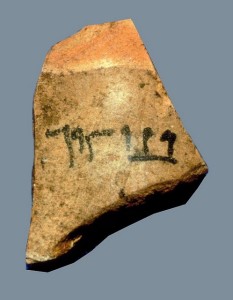The First Revolt (66-73 CE)
- From Text to Tradition
- Historical surveys
- Primary sources
- Josephus, War II, 405-48- The First Stage of the Revolt
- Josephus, War III, 1-7- The Appointment of Vespasian as General
- Josephus, War IV, 1-82- The Battle at Gamala
- Josephus, War V, 1-84, 269-88- The Battle of Jerusalem
- Josephus, War, X, 420-565- The Siege of Jerusalem
- Tacitus, Historiae V, 10-14- The Roman Earthworks at Jerusalem
- Babylonian Talmud Gittin 56a-b- The Rabbinic Account of the Siege
- Josephus, War VI, 149-266- The Final Roman Victory
- Dio Cassius, Historia Romana LXVI, 47- A Roman Account of the Revolt
- Josephus, War VII, 252-404- The Siege of Masada
- Josephus, Life 1-24, 80-83- The Autobiography of a Historian
- Josephus, Life 414-30- Josephus after the Revolt
- Josephus, War, Preface 6-16- Writing the History of the Jewish War
- Josephus, Antiquities XIV, 1-3- Josephus’ Philosophy of History
- Secondary sources
- Images
- The Roman emperor Nero portrayed on a silver coin, ruled 54-68 CE.
- Gamla, the first fortified city to be conquered by the Romans in the First Jewish Revolt.
- Coin minted in Gamla while under siege by the Romans during the First Jewish Revolt with Hebrew inscription, “of the redemption of holy Jerusalem.”
- Silver sheqel portraying a goblet, marks year 2 of the First Jewish Revolt, 67 CE (front) and pomegranates and Hebrew inscription, “Jerusalem the holy,” 67 CE (reverse).
- Bronze coin portraying a jar, marks year 2 of the First Jewish Revolt, 67 CE (front) and a vine leaf and Hebrew inscription, “freedom of Zion,” 67 CE (reverse).
- A Judea Capta coin, minted by the Romans portraying Vespasian the Roman commander of the northern campaign during the First Jewish Revolt and Roman emperor, ruled 69-79 CE, (front).
- A Judea Capta coin, minted by the Romans portraying Judea weeping under a palm tree symbolizing the Roman victory in the First Jewish Revolt (reverse).
- The Burnt House, Jerusalem, preserves ash and debris of its destruction in 70 CE.
- Roman gold coin depicting Vespasian’s triumphal return to Rome after his victory in the First Jewish Revolt.
- Arch of Titus, Roman Forum.
- Triumphal procession of the spoils of the Jerusalem Temple portrayed on the Arch of Titus, Rome.
- Roman tenth legion emblem imprinted on a floor tile.
- Bronze coin portraying the Roman Coliseum built by Vespasian with funds from the Jerusalem Temple.
- Aerial view of Masada and siege ramp built by the Romans
- Ben Yair Ostracon, Masada, believed by Yigael Yadin to be one of the lots drawn by the Zealots before committing suicide.
- Videos





very good History for us. Bravo for us the revolt of the Bar Kobach